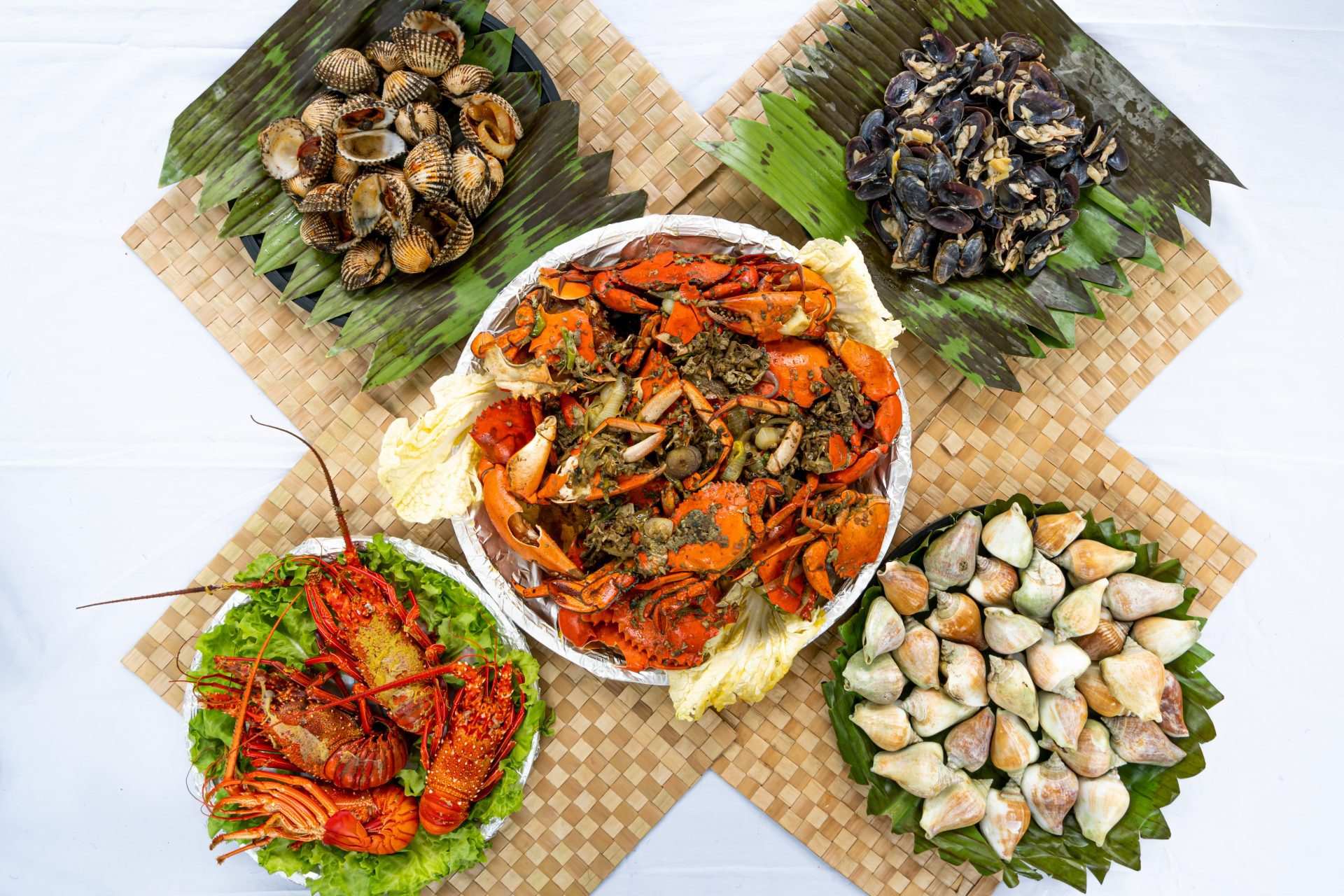
Food delicacies from around the world offer a glimpse into diverse cultures and traditions. Ever wondered what makes certain dishes so special? From the rich flavors of Italian truffles to the unique taste of Japanese fugu, these culinary delights are more than just meals—they're experiences. Did you know that some delicacies, like the French escargot, have been enjoyed for centuries? Or that the world's most expensive coffee, Kopi Luwak, involves beans eaten and excreted by civet cats? Foodies and curious minds alike will find these facts both intriguing and mouth-watering. Ready to dive into the world of gourmet treats? Let's explore 45 fascinating facts about these extraordinary foods!
Key Takeaways:
- Exotic fruits like durian and mangosteen offer unique flavors and health benefits, while vegetables like Romanesco broccoli and purple sweet potatoes provide diverse culinary experiences.
- From Kobe beef to fugu, rare meats and unusual seafood offer a wide range of flavors and textures, making them sought-after delicacies around the world.
Exotic Fruits
Exotic fruits often surprise with their unique flavors, textures, and health benefits. Here are some fascinating facts about these unusual treats.
- Durian is known as the "king of fruits" in Southeast Asia. Its strong odor can be off-putting, but many people love its creamy, custard-like flesh.
- Mangosteen is called the "queen of fruits." It has a sweet, tangy flavor and is rich in antioxidants.
- Rambutan looks like a hairy lychee. Its juicy, sweet flesh is a favorite in tropical regions.
- Dragon fruit comes from a cactus. Its vibrant pink skin and speckled flesh make it a visual and tasty delight.
- Jackfruit is the largest tree-borne fruit. It can weigh up to 80 pounds and is often used as a meat substitute in vegan dishes.
Unique Vegetables
Vegetables come in all shapes and sizes, each with its own set of benefits and culinary uses. Let's explore some unique ones.
- Romanesco broccoli looks like a fractal. Its intricate, spiral pattern is a natural wonder.
- Kohlrabi is a bulbous vegetable that tastes like a cross between a cabbage and a turnip.
- Oca is a tuber from the Andes. It comes in various colors and has a tangy, lemony flavor.
- Fiddlehead ferns are young, coiled fern fronds. They have a taste similar to asparagus and are a spring delicacy.
- Purple sweet potatoes are not only vibrant but also packed with antioxidants.
Rare Meats
Some meats are considered delicacies due to their rarity and unique flavors. Here are a few that stand out.
- Kobe beef comes from Wagyu cattle in Japan. It's known for its marbling and melt-in-your-mouth texture.
- Iberico ham is made from black Iberian pigs. It's cured for up to four years, resulting in a rich, nutty flavor.
- Alligator meat is popular in the southern United States. It tastes like a cross between chicken and fish.
- Kangaroo meat is lean and high in protein. It's a common dish in Australia.
- Guinea pig is a traditional dish in Peru. It's often roasted and served whole.
Unusual Seafood
Seafood offers a wide range of flavors and textures. Some varieties are particularly unique and sought after.
- Geoduck is a large, burrowing clam. Its sweet, briny flavor is a delicacy in Asia.
- Sea urchin roe, or uni, is creamy and has a briny, oceanic taste. It's a sushi favorite.
- Abalone is a type of mollusk. Its firm, chewy texture and rich flavor make it highly prized.
- Fugu is a pufferfish that can be deadly if not prepared correctly. Only licensed chefs in Japan can serve it.
- Lutefisk is dried fish reconstituted in lye. It's a traditional dish in Scandinavian countries.
Decadent Desserts
Desserts can be as varied and unique as any other type of food. Here are some that stand out for their decadence and creativity.
- Baklava is a sweet pastry made of layers of filo filled with nuts and honey. It's a staple in Middle Eastern cuisine.
- Mochi is a Japanese rice cake. It's chewy and often filled with sweet red bean paste or ice cream.
- Pastel de nata is a Portuguese custard tart. Its flaky crust and creamy filling are irresistible.
- Churros are fried dough pastries. They're often dusted with sugar and served with chocolate sauce.
- Tiramisu is an Italian dessert made of layers of coffee-soaked ladyfingers and mascarpone cheese.
Fermented Foods
Fermentation not only preserves food but also enhances its flavor and nutritional value. Here are some fermented delicacies.
- Kimchi is a Korean dish made of fermented vegetables. It's spicy, tangy, and packed with probiotics.
- Sauerkraut is fermented cabbage. It's a staple in German cuisine and known for its tangy flavor.
- Natto is fermented soybeans. It's sticky, stringy, and has a strong flavor, popular in Japan.
- Kefir is a fermented milk drink. It's similar to yogurt but has a thinner consistency and more probiotics.
- Tempeh is a fermented soybean cake. It's firm, nutty, and often used as a meat substitute.
Spices and Herbs
Spices and herbs add depth and complexity to dishes. Some are particularly unique and worth noting.
- Saffron is the most expensive spice in the world. It comes from the stigma of the crocus flower and has a distinct, earthy flavor.
- Sumac is a tangy, lemony spice used in Middle Eastern cuisine. It adds a bright, citrusy note to dishes.
- Asafoetida is a pungent spice used in Indian cooking. It's often called "devil's dung" due to its strong smell.
- Epazote is a herb used in Mexican cuisine. It has a strong, medicinal flavor and is often added to beans.
- Fenugreek seeds and leaves are used in Indian and Middle Eastern dishes. They have a slightly sweet, nutty flavor.
Bizarre Snacks
Snacks can be as adventurous as any meal. Here are some bizarre yet beloved snacks from around the world.
- Hákarl is fermented shark from Iceland. It's known for its strong ammonia smell and acquired taste.
- Balut is a fertilized duck egg from the Philippines. It's boiled and eaten straight from the shell.
- Casu marzu is a Sardinian cheese infested with live maggots. It's illegal in many countries but considered a delicacy by some.
- Century egg is a Chinese delicacy. It's a preserved egg with a creamy, pungent flavor.
- Escamoles are ant larvae from Mexico. They're often called "insect caviar" and have a nutty flavor.
Unique Beverages
Beverages can be just as unique and varied as food. Here are some that stand out for their distinct flavors and ingredients.
- Kombucha is a fermented tea drink. It's slightly effervescent and known for its probiotic benefits.
- Chicha is a traditional fermented corn drink from South America. It can be alcoholic or non-alcoholic.
- Kvass is a fermented beverage made from rye bread. It's popular in Eastern Europe and has a slightly sour taste.
- Bubble tea is a Taiwanese tea-based drink. It contains chewy tapioca pearls and comes in various flavors.
- Mate is a traditional South American drink made from yerba mate leaves. It's often shared among friends and has a strong, earthy flavor.
Savoring the Final Bite
Food delicacies from around the world offer a fascinating glimpse into diverse cultures and traditions. From the exotic flavors of durian to the luxurious taste of truffles, each dish tells a unique story. These 45 facts highlight the rich history, unusual ingredients, and culinary creativity that make these foods special. Whether you're an adventurous eater or a curious learner, there's always something new to discover in the world of food. So next time you sit down for a meal, remember the incredible journey that brought those flavors to your plate. Enjoy every bite, and maybe even try something new. After all, food is more than just sustenance; it's a celebration of life and culture. Happy eating!
Frequently Asked Questions
Was this page helpful?
Our commitment to delivering trustworthy and engaging content is at the heart of what we do. Each fact on our site is contributed by real users like you, bringing a wealth of diverse insights and information. To ensure the highest standards of accuracy and reliability, our dedicated editors meticulously review each submission. This process guarantees that the facts we share are not only fascinating but also credible. Trust in our commitment to quality and authenticity as you explore and learn with us.


